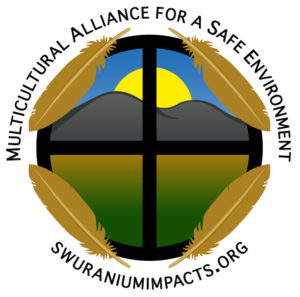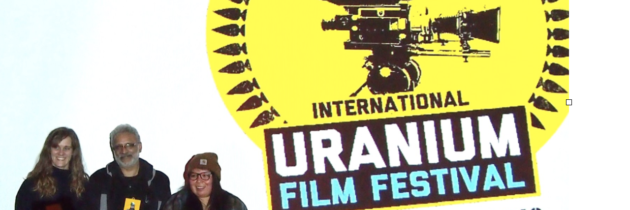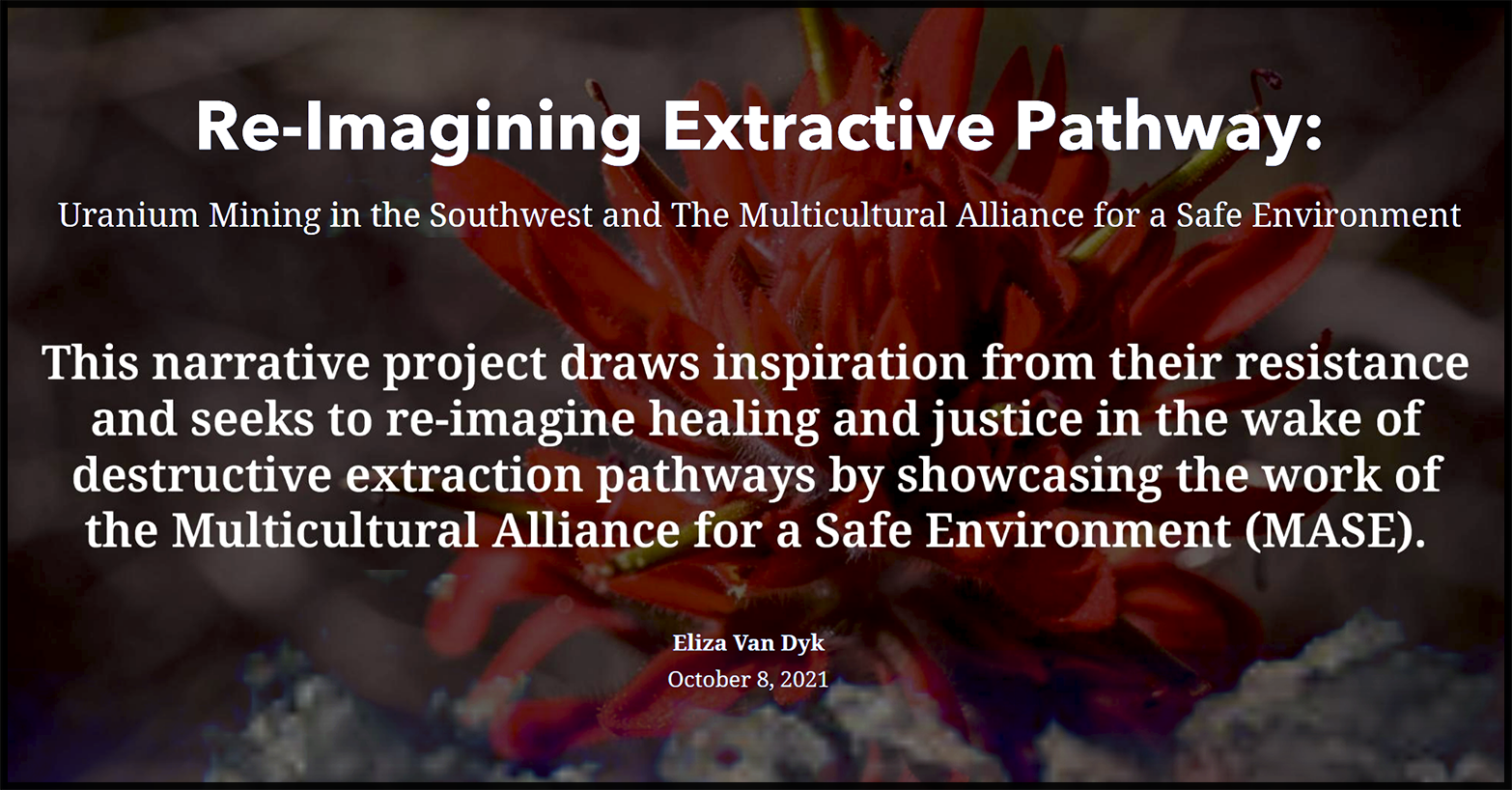Film festival hopes to raise awareness of uranium mining’s impact
By Dana Martinez December 10, 2018
Cibola County Bureau cibola2@gallupindependent.com
GRANTS — The Multicultural Alliance for a Safe Environment hosted a video contest Friday and tied it to the annual Uranium Film Festival. Residents were treated to be the first to see the films of local students. The main goal behind the event was to spread awareness of the impact of the uranium industry on families.
The contest was held in two parts. The first part was a viewing and results of elementary student videos at the Grants Public Library. All of the winning entries were from students at St. Joseph Mission School in San Fidel.
In the evening the review of high school student video submissions and results were seen in the New Mexico State University-Grants auditorium. In first place was a Grants High School Class, represented by Josh Sanchez, and in second place was Emily Ramirez.
Ramirez was interviewed after her video. The audience asked how she was able to get sweeping overhead shots of the Grants Mining Museum. She replied that she used her father’s drone. Another audience member asked if she had ever considered the impact of uranium on the area before. She replied that with her household being in an affected area they have become familiar with radon testing, but that she hadn’t thought about it beyond that.
Organizer and MASE associate Candace Head-Dylla said she was happy to see the students take such an interest in the subject. The awards ceremony concluded the film festival.
Film festival director Norbert G. Suchanek, of Brazil, said filmmaker Shri Prakash of Ranchi, India, was awarded “The International Uranium Film Festival Lifetime Achievement Award” for fighting the uranium industry for more than 20 years with his camera and for giving the voiceless uranium victims, who are the indigenous Adivasi people of Jadugoda, Indian, a powerful voice.
Filmmaker Brittany Prater of Ames, Iowa, received “The Young Director Award” for her feature-length documentary, “Uranium Derby,” which is about how she looked into her hometown’s highly secretive involvement in the Manhattan Project during the 1940s. Prater uncovered the historical role of Ames, Iowa, in the production of materials for the first atomic bomb through the portrayal of archival footage featuring two important involved scientists of the time, Dr. Harley Wilhelm and Dr. Frank Spedding.
‘Dooda Leetso’
Peaches, who received “The Young Indigenous Filmmaker Award” for her short documentary, “Dooda (No) Leetso (Uranium) The Legacy of Navajo Nation Uranium Mining,” said the award was her first one.
Dooda Leetso was produced by her company, PaperRocketProductions, which she co-founded. Peaches said she submitted Dooda Leetso to the international film festival at the invitation of Anna Marie Rondon, executive director of New Mexico Social Justice and Equity Institute.
“I’m so glad I did because I got to meet some amazing people who are doing wonderful work,” Peaches said.
She said she received her first formal filmmaking training when she was about 16- or 17-years-old and a participant in the “Outta Your Backpack Media project,” which was one of numerous endeavors by activist artist, musician, songwriter and organizer Klee Benally of Flagstaff. Peaches emphasized that Outta Your Backpack enhanced the filmmaking of her and her network of friends.
“We were on a fast track in making films and Outta Your Backpack was a great opportunity made available to us,” she remembered.
Peaches said that PaperRocketProductions has started working on “Protect,” which is a film that focuses on fossil fuels and indigenous communities directly impacted by it and their reactions to it.
She encouraged youth and young adults to become involved in film festivals by attending them, which she hoped would motivate them to take action in their communities.
Peaches added, “Young people should always have a seat at the table to have their voices heard because many of them feel like issues involving uranium and fossil fuels are not their issues or is an issue that they don’t need to worry about.”
Recycle
The Uranium Film Festival trophy is a piece of art produced by Brazilian waste-material-artist Getúlio Damado, who lives and works in the famous artist quarter Santa Teresa in Rio de Janeiro where the first International Uranium Film Festival was held in May 2011.
Damado uses old watches in the making of the awards to remember the first atomic bomb dropped over Hiroshima. Watches in Hiroshima stopped exactly at 8:15 in the morning when the A-bomb exploded on Aug. 6, 1945.
Nuclear filmmakers sometimes risk their careers or even their lives to do what they have to do and so the International Uranium Film Festival provides the filmmakers with a global audience and honors them and their work with awards “Radioactivity is invisible, has no smell no taste,” Suchanek said.
“It’s a huge challenge to film because it’s something that you cannot see, but something that still can hurt or even kill you.”
He noted, “In addition, nuclear programs and their consequences are often hidden or concealed by industry and governments. This complicates the work of investigative filmmakers. That’s why we founded the uranium fi lm festival to honor and reward these filmmakers and their work.”
International Uranium Film Festival presented filmmaker Deidra Peaches of Flagstaff, Arizona, with The Young Indigenous Filmmaker Award.
Photo courtesy International Uranium Film Festival






